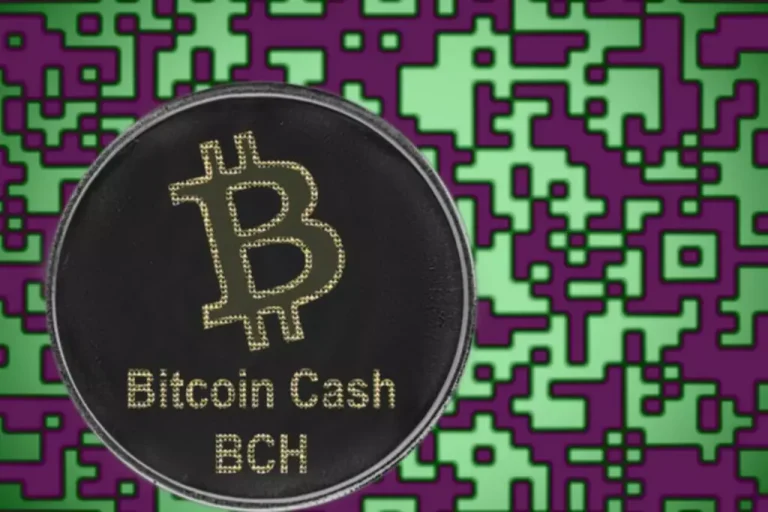Content
Investors will soon have more independence, which will allow them to “deploy [assets] in creative https://www.xcritical.com/ ways that seem impossible today,” Simerman says. DeFi also carries big implications for the big data sector as it matures to enable new ways to commodify data, Simerman says. Ethereum 2.0 isn’t a panacea for all of DeFi’s issues, but it’s a start.
What is DeFi (Decentralized Finance)?

Decentralized finance is a blanket term for the global system of blockchains and applications that are being developed to allow people to transact directly with each other using cryptocurrencies Cryptocurrency exchange such as Bitcoin. The low amount of actual money invested in cryptocurrency and the effects that hype has on prices should make you consider whether investing in decentralized finance is worth it. If you have money you can afford to lose, the space can be very profitable—but the losses can be just as significant. Peer-to-peer (P2P) financial transactions are one of the core premises behind DeFi, where two parties agree to exchange cryptocurrency for goods or services without a third party involved. Using applications called wallets that can send information to a blockchain, individuals hold private keys to tokens or cryptocurrencies that act like passwords. Ownership of the tokens is transferred by ‘sending’ an amount to another entity via a wallet, whose wallet, in turn, generates a different private key for them.
DeFi is a term for financial applications that use blockchains instead of banks.
Essentially, dApps are similar to the normal apps we use every day, but they’re powered behind the scenes by smart contracts—digital agreements that execute automatically when the contract terms are met. As you learn about DeFi, you may come across the distinction between centralized finance and decentralized finance. Centralized finance—sometimes referred to what is open finance in crypto as “CeFi” or “TradFi” by the crypto community—describes the world of traditional banks, brokers, insurers, and credit card companies.
What is DeFi? A beginner’s guide to decentralized finance
- All they have to do is create a liquidity pool by supplying the ERC20 token and ETH.
- Prices had been rising significantly before 2022 as investors turned to anything they could find following the initial outbreak of COVID-19 and the ensuing pandemic.
- Decentralised finance, also known as DeFi, is a paradigm shift that has created accessible financial products that are entirely peer-to-peer, removing the need for a middleman such as a bank or broker.
- It is a 1-to-1 digital representation of the US dollar, making it relatively stable in volatile markets.
- Loopring states that the Loopring Exchange it is the first “publicly accessible zk-Rollup exchange” on the Ethereum mainnet.
- Founded in 1993, The Motley Fool is a financial services company dedicated to making the world smarter, happier, and richer.
Sign up for free online courses covering the most important core topics in the crypto universe and earn your on-chain certificate – demonstrating your new knowledge of major Web3 topics. In November 2021, risk management firm Elliptic estimated that DeFi users lost $10.5 billion to hacks and scams over the preceding two years. As of November 2020, less than $20 billion worth of value was locked in various DeFi products, most of them on Ethereum. By the following year, it was worth more than $260 billion, with $19 billion coming from Binance Smart Chain alone.
Synthetix’s move is part of a wider trend in DeFi to become increasingly more decentralized and community-owned. Synths are designed to track the value of crypto to and non-crypto assets, including forex, commodities and indexes. There are now almost 40 different trading pairs on Synthetix, including for gold, silver, the Japanese yen and UK’s FTSE stock index. There are private pools, where only the creator of the pool can add liquidity and has full control over the pool’s parameters. There are also shared pools and smart pools, open for anyone to invest in and gain exposure to how the portfolio moves.
Through DeFi, these individuals, and everybody else now have access to a wide range of permissionless protocols that provide many of the same features as banks. Since the blockchain is permissionless, DeFi applications can be accessed by anyone—no matter where in the world they reside. Anybody with a cryptocurrency wallet and an internet connection can interact with the world of Decentralized Finance—with no credit checks, KYC, or other barriers to entry. The offers that appear on this site are from companies that compensate us. But this compensation does not influence the information we publish, or the reviews that you see on this site. We do not include the universe of companies or financial offers that may be available to you.
Using a DEX allows each party to retain full control of their respective cryptocurrency holdings rather than depositing them in a wallet held by a centralized exchange that may be vulnerable to hacking. Decentralized finance provides financial services with no centralized source of authority, but instead, rely on peer-to-peer digital transactions and exchanges. The central tenet of DeFi is that it rejects the traditional structure in which a centralized power or source of authority is required as a financial intermediary. This term may sound confusing for those unfamiliar with regular money markets. Put simply, money markets are the markets for borrowing and lending assets. As such, decentralized money markets mainly allow users to borrow or lend various crypto assets.
This is because Ethereum was the first network to support smart contracts. Since decentralized finance is still an emerging field, it currently faces several challenges. While security is one of the primary benefits of participating in a decentralized finance transaction, it is also a major concern. A lack of government regulation on this evolving financial ecosystem means there are ample opportunities for hackers to scam or hack restricted data.

The bank then turns around and lends that money to another customer at 3% interest and pockets the difference profit. Traders will know that derivatives, or synthetics, track the value of something. This allows traders to gain exposure to an asset they want to invest in, even if it is hard to physically invest in it.
But if and until it does, the DeFi space will be rife with uncertainty and speculation. DeFi applications are designed to communicate with a blockchain, allowing people to use their money for purchases, loans, gifts, trading, or any other way they want without a third party. These applications are programs installed on a device like a personal computer, tablet, or smartphone that make it easier to use. Without the applications, DeFi would still exist, but users would need to be comfortable and familiar with using the command line or terminal in the operating system that runs their device.
DAI is purposely overcollateralized by Ether, which enables the value of DAI to remain stable even as Ether’s value fluctuates. Top Decentralized Exchanges (DEXs) such as Paraswap, Uniswap, and Curve all use this technology. In fact, there are plenty of DeFi platforms on other networks such as Solana and Cardano. Those are a few of the biggest risks in DeFi and ones that investors thinking of participating need to understand before they fully commit. Any estimates based on past performance do not a guarantee future performance, and prior to making any investment you should discuss your specific investment needs or seek advice from a qualified professional.
However, there are risks involved, so it pays to do your research before locking money into DeFi. In a blockchain, transactions are recorded in files called blocks and verified through automated processes. If a transaction is verified, the block is closed and encrypted; another block is created with information about the previous block and information about newer transactions. To access all the benefits of DeFi, users have to assume some risk, too. The good news, though, is that DeFi protocols are getting easier to use and safer by the day. There are no custodians of assets that are readily available and known entities, e.g. banks.
The Loopring Exchange utilizes the Loopring protocol, complete with smart contracts and ZK circuits. At present, the total locked value in DeFi protocols is nearly $43 billion. That secures the system by providing users with anonymity, plus verification of payments and a record of asset ownership that’s (nearly) impossible to alter by fraudulent activity. Many believe DeFi is the future of finance and that investing in the disruptive technology early could lead to massive gains. There are many people using it to make money and transact, but in its current state it is not yet as safe as traditional finance methods. The blocks are “chained” together through the information in each proceeding block, giving it the name blockchain.
Since they use decentralized blockchains, Decentralized applications (dApps) operate without any centralized governing entity, allowing users to interact with each other in a completely trustless manner. To enable DeFi, smart contracts automatically execute transactions among participants. When the contract’s conditions are fulfilled, they self-execute their set of instructions. If the trend continues and the DeFi maximalists are right, this is just the beginning of a massive DeFi wave. True believers argue that the advantages of an open and decentralized financial system are simply too compelling to not capture trillions of dollars of value. However, because the applications are built atop a blockchain, you must use that blockchain’s coins to pay for transactions.

Leave a Reply